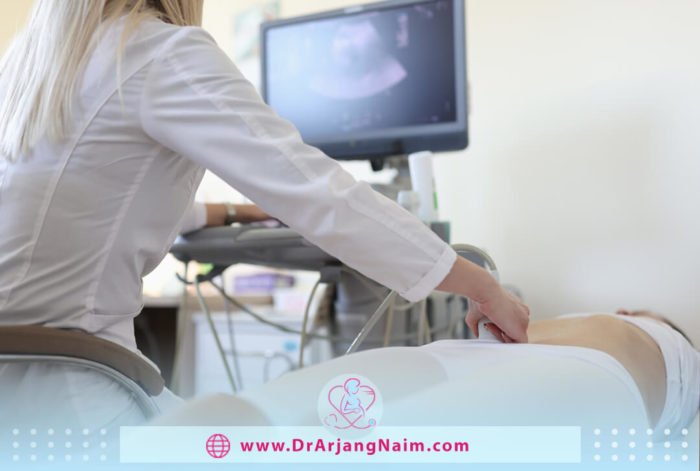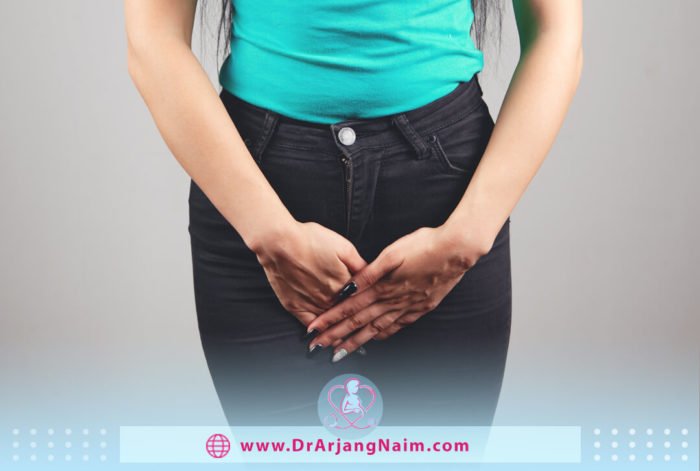The pelvis is located in the lower abdomen and includes the intestines, bladder, uterus, and ovaries. Typically, pelvic pain is pain that starts in these organs. Of course, this pain may also be related to the pelvic bones, muscles, nerves, pelvic blood vessels, and adjacent joints. Pelvic pain can be severe or mild, periodic or chronic, and sometimes extends to the back, thighs, or buttocks.
This pain may be a sign of menstrual cramps, ovulation, or a digestive problem such as food intolerance. A more serious problem can also cause it. Occasionally, pain in this area indicates an infection or problem with the genitals or other organs in that area.
Symptoms
Symptoms of pelvic pain include:
- Severe and steady pain
- Pain that comes and goes (intermittent)
- Dull aching
- Pressure or heaviness deep within your pelvis
- Sharp pains or cramping
- Pain during intercourse
- Pain while having a bowel movement or urinating
- Pain when sitting for long periods of time
Causes
Pelvic pain is a complex condition that can have many causes. Sometimes, a single disorder may be identified as the cause. In other cases, the pain may be the result of several illnesses.
1. Menstrual pain and cramps
Menstrual pain and cramps are common causes of pelvic pain. More than half of menstruating women experience pain for at least one or two days per cycle. Menstrual cramps usually occur in women just before start periods because the uterus shrinks and the inner layer is destroyed. The pain may be similar to jabbing pain or muscle spasm. Using a warm pad may relieve the feeling. Over-the-counter medications such as ibuprofen and naproxen may also help relieve pain.
2. Ovulation
If a woman feels pain in one side of her pelvis in the middle of her menstrual cycle, she may develop Mittel Shamers. Doctors use Mittel Shamers to describe painful ovulation. When a woman ovulates, the ovaries release the egg with some fluid. The egg then passes through the fallopian tube and enters the uterus. Fluid released from the ovaries can spread to the pelvic area, sometimes irritating the pelvis and causing pain. This discomfort may last for minutes or hours; it is temporary pain and does not require special treatment.
3. Cystitis or urinary tract infections
Cystitis refers to inflammation in the bladder due to a bacterial infection. Cystitis occurs when bacteria from the vagina, rectum, or skin enter the urethra and enter the bladder. Urinary tract infection is an infection that can occur anywhere in the system, while cystitis occurs only in the bladder. These infections sometimes go away on their own, but a short course of antibiotics usually cures bladder inflammation and other urinary tract infections.
4. Interstitial cystitis
A woman may have persistent inflammation of the bladder for no apparent reason, which is called interstitial cystitis. Interstitial cystitis can cause pelvic pain and symptoms such as painful urination, need for frequent urination, and pain during sex. Treatment often involves managing the symptoms as much as possible.
5. Sexually transmitted infections
Pelvic pain may indicate a sexually transmitted infection (STI), such as gonorrhea or chlamydia. Sexually transmitted diseases occur in sexually active people. Along with pelvic pain, other symptoms of sexually transmitted infections may include painful urination, intermenstrual bleeding, and changes in vaginal discharge.
6. Endometriosis
Endometriosis occurs when the endometrium or tissue inside the uterus grows outside the uterus. Endometriosis may be the source of chronic and long-term pelvic pain in some women. When a person starts menstruating, this extrauterine tissue responds to hormonal changes, which can cause bleeding and inflammation. The sufferer may experience mild to severe pain.
7. Pelvic inflammatory disease
Pelvic inflammatory disease (PID) is an infection of the uterus that can damage surrounding tissue. Pelvic inflammatory disease can occur if bacteria from the vagina or cervix enter the uterus.
PID is usually a complication of an STI such as gonorrhea or chlamydia. Along with the pain, women may experience other symptoms, including abnormal vaginal discharge and bleeding.
8. Irritable bowel syndrome
Irritable Bowel Syndrome (IBS) is a gut disorder that causes pain and symptoms such as diarrhea, constipation, and bloating. The symptoms of IBS go away over time, especially after bowel movement. There is no cure for IBS, so treatment focuses on managing symptoms through changes in diet, stress levels, and medications.
9. Appendicitis
Appendicitis is inflammation in the appendix, which is a small organ in the lower abdomen and right side. The infection causes the disease, and although it is common, it can be severe. Anyone who feels severe pain in the lower right abdomen, along with other symptoms such as fever and vomiting, should seek medical attention immediately, as this may be a sign of appendicitis.
10. Ectopic pregnancy
An ectopic pregnancy occurs when the fetus is implanted outside the uterus and begins to grow. A woman with an ectopic pregnancy may experience severe pain and cramp in the pelvis, usually more on one side. Other symptoms include nausea, vaginal bleeding, and dizziness.
11. Urinary stones
Urinary tract stones contain salts and minerals such as calcium. These minerals can form crystals in the bladder or kidneys and cause pain in the pelvis or lower back. Stones can change the color of urine and often make it pink or red. Some stones do not need treatment, but passing them can be painful. The doctor may recommend medications to remove the stones or surgery to remove them.
12. Pelvic adhesions
Adhesion is scar tissue that forms inside the body and connects two tissues that should not be connected. This may lead to pain. Scar tissue can be caused by an old infection, endometriosis or other problems. Pelvic adhesions can lead to chronic pelvic pain in some women and cause other symptoms depending on the location.
13. Ovarian cysts
Ovarian cysts occur when the ovaries do not release an egg. Ovarian cyst pain occurs in some women. When this happens, a cyst growth in the area may cause bloating, pressure, or pelvic pain. Most cysts are non-cancerous. In many cases, the ovarian cyst goes away on its own. In some cases, the cyst may bleed or burst, which can cause severe pelvic pain.
14. Uterine fibroids
Uterine fibroids are muscle mass and fibrous tissue inside the uterus. While they are non-cancerous and do not tend to cause symptoms, their growth can cause pain. They may cause pelvic or back pain or pain during sex. Fibroids may also cause excessive bleeding or cramping during menstruation.
15. Tumor
In rare cases, malignant growths in the genitals, urinary tract, or gastrointestinal tract may be the cause of pelvic pain. Depending on where it occurs, the tumor may cause other symptoms.
16. Pelvic Organ Prolapse H3
With age, pelvic prolapse may occur, in which the bladder or uterus is in a low position. It is not usually a serious health problem but can be uncomfortable. It may put pressure on the vaginal wall and cause discomfort in the groin or lower back.
Pelvic pain in pregnancy

Pelvic pain during pregnancy is usually not dangerous, and it is caused by the regulation and growth of the body, which can cause discomfort. In general, any pain that bothers the pregnant mother, especially if it is accompanied by other symptoms such as vaginal bleeding or persists for a long time, should be reported to the doctor. Some of the possible causes of pain during pregnancy are:
- Braxton-Hicks contractions: These pains mostly occur in the third trimester of pregnancy. They may be due to physical stress, Infant movements, and dehydration occur. Braxton-Hicks contractions can be uncomfortable but not as severe as labor pains.
- Miscarriage: Miscarriage means the loss of pregnancy before the twentieth week of pregnancy. Most miscarriages occur in the first trimester, before the 13th week. They are usually accompanied by vaginal bleeding or bright red spots, abdominal cramps, and pain in the pelvis, abdomen, or lower back.
- Premature labor: Childbirth that occurs before the 37th week of pregnancy is considered premature labor. Symptoms include lower abdominal pain, lower back pain, fatigue, and more severe vaginal discharge.
- Placental abruption: The placenta is designed to provide oxygen and nourish the baby until delivery. The placenta rarely separates from the uterine wall. Placental abruption can cause vaginal bleeding, along with a sudden feeling of pain or tenderness in the abdomen or back.
- Ectopic pregnancy: If a fertilized egg is implanted in the fallopian tube or other parts of the reproductive system instead of the uterus, it is called an ectopic pregnancy. The first symptoms are severe pain and vaginal bleeding. Pain may occur in the abdomen or pelvis.
Diagnosis

Finding out what causes chronic pelvic pain often involves eliminating the causes because many different disorders can cause pain.
Pelvic exam
Examine the pelvis for signs of infection, abnormal growth, or tension in the pelvic floor muscles.
Lab tests
The doctor may recommend tests to look for infections such as chlamydia or gonorrhea. The doctor will also order a blood test to check blood cell count and a urine test to check for a urinary tract infection.
Ultrasound
Ultrasound uses high-frequency sound waves to produce accurate images of body structures. This method is especially useful for diagnosing lumps or cysts in the ovaries, uterus, or fallopian tubes.
Other imaging tests
The doctor may use abdominal x-rays, computed tomography (CT) scans or magnetic resonance imaging (MRI) scans to make a more accurate diagnosis.
Laparoscopy
The doctor makes a small incision in the abdomen during this procedure and inserts a thin tube attached to a small camera. Laparoscopy allows the doctor to look at the pelvic organs and look for abnormal tissue or signs of infection.
Treatment

The goal of treatment is to reduce symptoms and increase the quality of life. If the doctor can determine the root cause, treatment will focus on that cause. However, if the cause cannot be identified, treatment focuses on managing pain and other symptoms.
Medications
Depending on the cause, your doctor may recommend a number of medications to treat the disease, such as:
- Pain relievers: Pain relievers such as aspirin, ibuprofen, or acetaminophen reduce pelvic pain to some extent.
- Hormone treatments: Some days when women experience pelvic pain may coincide with a specific stage of their menstrual cycle and the hormonal changes that control ovulation and menstruation. In this case, birth control pills or other hormonal medications can help relieve pelvic pain.
- Antibiotics: If the cause of the pain is an infection, the doctor will prescribe antibiotics.
- Antidepressants: Some types of antidepressants can be helpful for chronic pain.
Other therapies
The doctor may recommend specific treatments or procedures as part of treatment for chronic pelvic pain. These treatments include:
- Physical therapy: Stretching exercises, massage, and other relaxation techniques may improve pelvic pain. A physiotherapist can be helpful in this situation.
- Neurostimulation: This treatment involves implanting a device that blocks nerve pathways to prevent the pain signal from reaching the brain. Depending on the cause of the pelvic pain, it may be helpful.
- Trigger point injections: The doctor may inject anesthesia into specific areas where the patient feels pain. This medication, usually with prolonged local anesthesia, can block pain and reduce discomfort.
Surgery
The doctor may recommend surgery to correct an underlying problem that is causing chronic pelvic pain.
When to see a doctor
In many cases, pelvic pain does not require care. However, there are cases that women should see a doctor. Any new and severe pain needs to be evaluated. Women with abnormal vaginal bleeding should consult a doctor immediately.
If a person has a known illness and experiences sudden changes in pain, such as severe twisting or sudden severe pain, she should seek medical attention, as this could be a sign of a serious change in the condition. Other symptoms that come with pelvic pain, such as fever, nausea, and vomiting, are also signs that women need to see a doctor.
The bottom line
Pelvic pain is a common disease in women that has many causes. It can be chronic or acute. Pelvic pain often responds to home and medication. However, it can be caused by many serious conditions that require medical attention.
In most cases, pelvic pain in women occurs due to a common problem such as menstrual cramps or painful ovulation. However, if a person notices signs that a more serious underlying problem is causing the pain, they should see a doctor.
Accurate diagnosis is essential in each case to avoid possible serious complications and find the best treatment. Dr. Arjang Naim MD, by thoroughly examining the patient’s condition and performing the necessary tests, identifies the cause of the pain and offers the best treatment.
Additional questions
- Does vaginal cancer cause pelvic pain?
The most common symptom of vaginal cancer is painless vaginal bleeding. In rare cases, pain in the pelvis, painful urination, or discomfort associated with constipation may occur.
- Where is pelvic pain located?
Pelvic pain is in the lower abdomen and pelvis. Pelvic pain may refer to symptoms originating from the reproductive, urinary, or digestive systems, pelvic muscles, and ligaments.
- What kind of pelvic pain is associated with cervical cancer?
Back pain or pelvic pain can be related to problems in the reproductive organs, such as the cervix. A symptom of cervical cancer is pelvic pain, especially persistent pain. Pelvic pain near the appendix usually does not occur unless the cancer is in an advanced stage.
- What can be felt during a pelvic exam?
During the exam, the doctor will check the size and shape of the uterus and ovaries and note any tender areas or abnormal growth. After a vaginal exam, the doctor inserts a gloved finger into the rectum to check for tenderness, growth, or other abnormalities.
- Can pelvic pain be caused by stress?
People who experience pelvic pain often don’t realize that stress has a lot to do with their symptoms. This results from the pelvic stress reflex reaction, in which the pelvic floor muscles contract in response to physical or psychological stress.
References:
https://www.medicalnewstoday.com/articles/149109
https://www.mayoclinic.org/diseases-conditions/chronic-pelvic-pain/diagnosis-treatment/drc-20354371
https://www.medicalnewstoday.com/articles/327511#summary
https://www.healthline.com/health/womens-health/pelvic-pain-in-women#in-pregnancy
https://my.clevelandclinic.org/health/symptoms/12106-pelvic-pain




